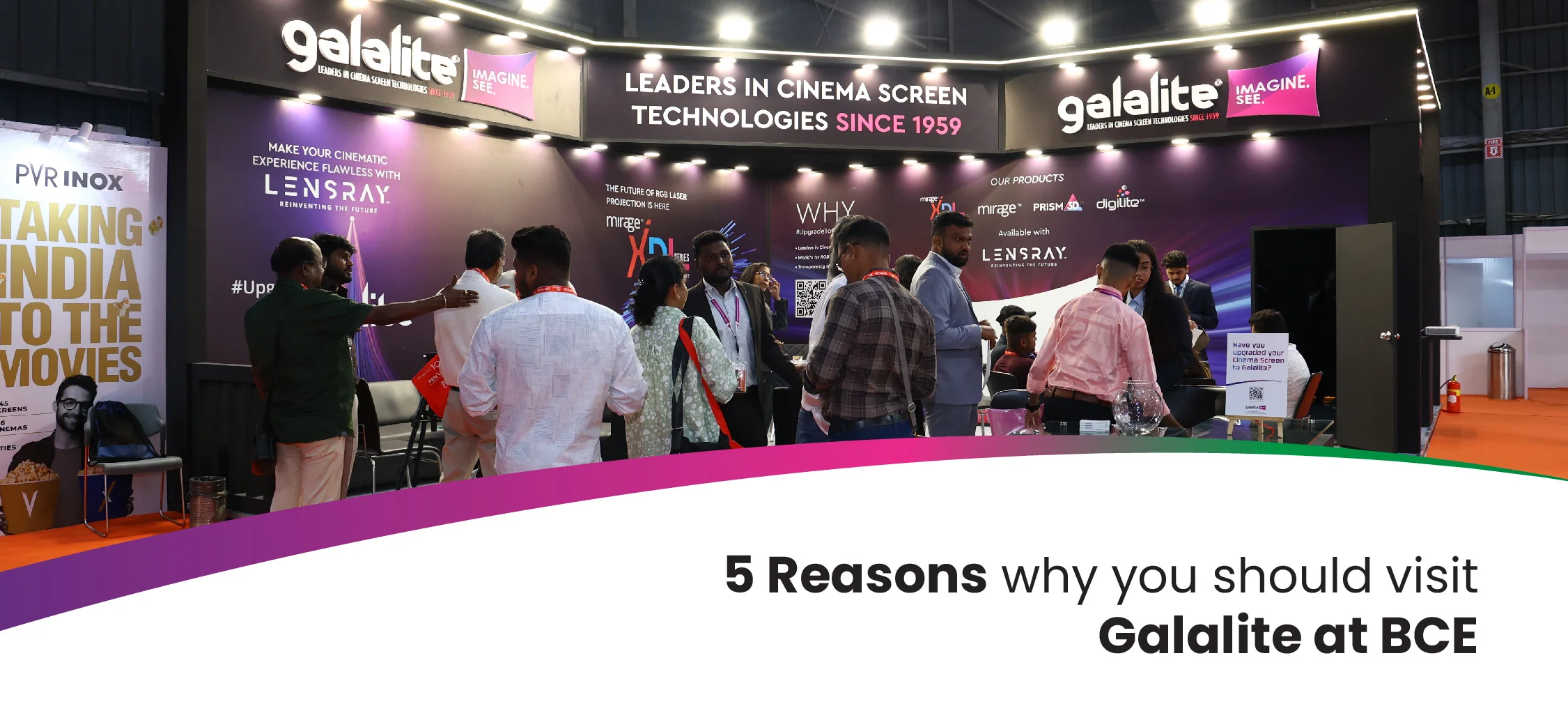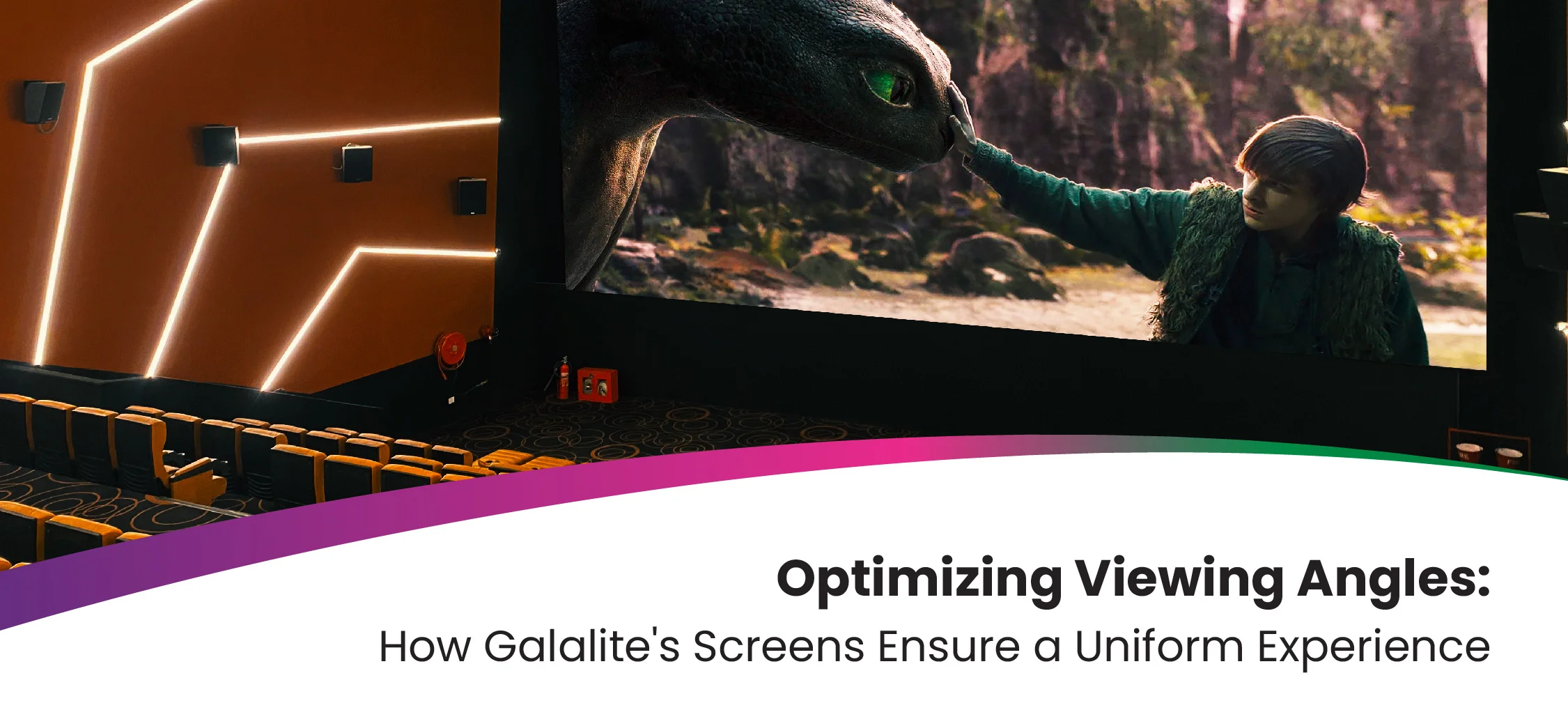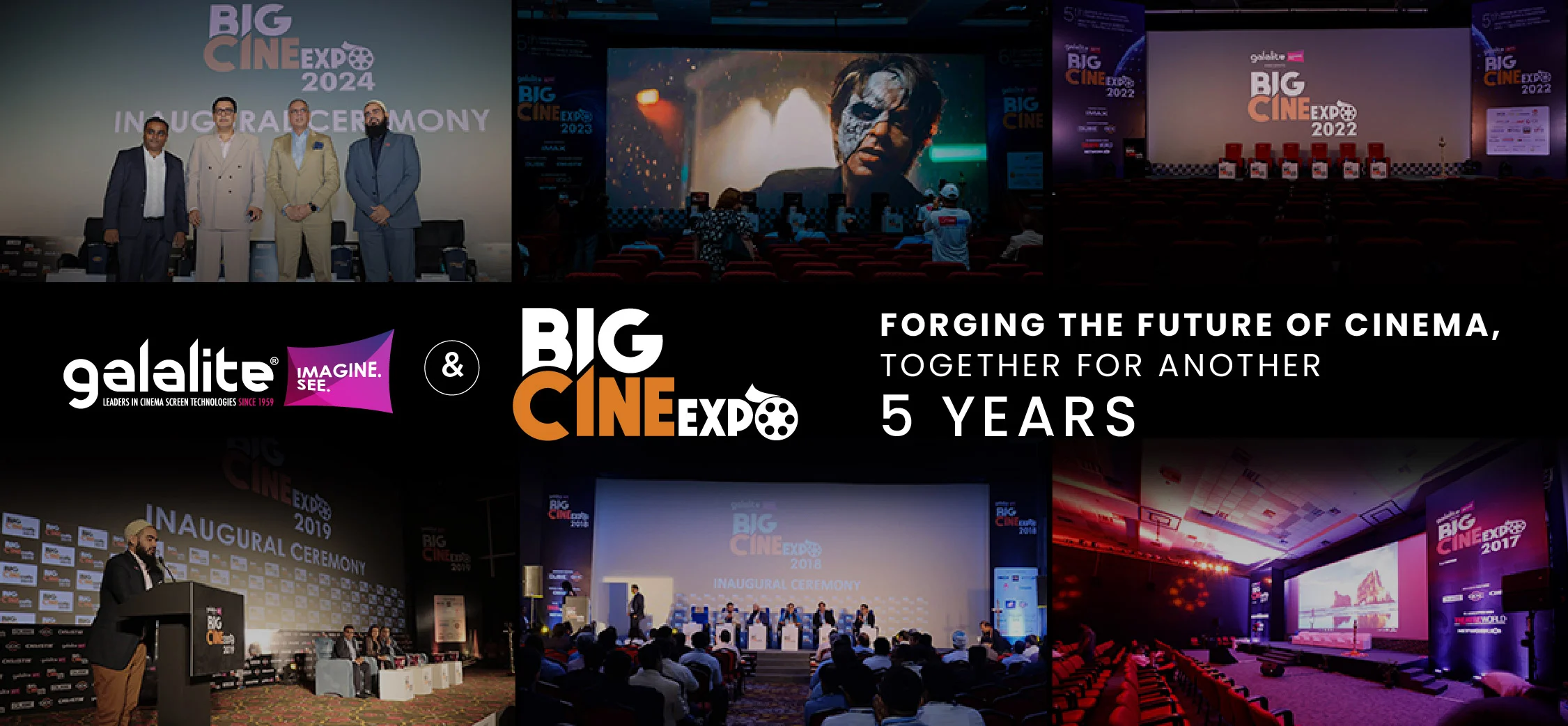
Cinema technology is evolving faster than ever. Upgrading cinema screens is no longer a cosmetic refresh, it is a long-term investment that boosts revenue, enhances audience experience, and future-proofs theatres for next-generation projectors.
Galalite’s advanced screen portfolio, including the Mirage XDL series, Prism 3D, and Lensray®-enabled fabrics, is purpose-built to deliver exceptional uniformity, colour fidelity, and durability in today’s multiplex environments.
1. Economic and Experiential Reasons to Upgrade Now
Audience Experience Drives Repeat Business
High-quality picture performance with excellent contrast, colour accuracy, and uniform luminance increases the likelihood of repeat visits, premium ticket purchases (IMAX, Large Format, Premium Screens), and positive word-of-mouth. Galalite’s Lensray™ technology and Mirage XDL family reduce hotspots and speckles, maximizing the advantages of RGB laser projectors and directly enhancing what audiences see and feel.
Operational Savings and Reduced Service Interruptions
Premium screen materials and in-house fabrication techniques, including invisible seams and advanced coatings, reduce repair frequency and replacement cycles, lowering lifetime maintenance costs and downtime. Galalite emphasizes in-house coating and manufacturing controls that ensure consistent quality.
Future Compatibility for Projection Roadmaps
As exhibitors adopt RGB laser projectors to access wider colour gamuts and higher brightness, the choice of screen becomes critical. Galalite screens are tuned for laser projection, protecting prior projector investments and unlocking their full capabilities.
2. Long-Term Benefits: Durability, Audience Satisfaction, and Technological Compatibility
Durability
Well-manufactured screens with protective coatings and robust mounting offer longer service life and predictable performance. Galalite’s manufacturing controls and product variants, including silver screens, acoustic transparent (AT) screens, and high-gain laser screens, lower replacement risk across formats.
Audience Satisfaction and Revenue Resilience
Improved image uniformity and colour accuracy reduce customer complaints and increase the likelihood of premium format upgrades. Case studies show venues using Galalite products reporting higher guest satisfaction post-upgrade.
Technological Compatibility and Reduced Obsolescence
Screens designed for laser projection prevent the “screen bottleneck,” where a high-end projector is limited by an old screen. The Mirage XDL family is explicitly positioned for RGB laser systems, ensuring exhibitors extract the full value of projector upgrades.
3. Case Studies — Proof Points
Multiplex Retrofit (Europe / MovieLand)
MovieLand (Ivano-Frankivsk) installed multiple Galalite screens across auditoriums to standardize performance for both 2D and 3D presentations. The chain reported improved uniformity and simplified inventory of replacement parts.
Melody Theatre: Using a Barco HDR projector with Mirage 2.7, this venue delivered India’s first HDR cinema experience, showcasing Galalite’s capability to maximize projector performance.
Gowri Shankar Theatre, Vardeipalam: Mirage XDL 2.7 demonstrates excellent performance with RGB laser projection, delivering superior luminance uniformity and vibrant colours.
Trade Show Validation
Galalite showcased Mirage XDL 1.9 and 2.3 at CineEurope and Big Cine Expo, allowing integrators and operators to experience screens with modern laser projectors, building trust in performance claims prior to procurement.
4. Key ROI Drivers
- Incremental Ticket Revenue: Higher occupancy and premium pricing
- Increased Food and Beverage Sales: Driven by repeat visits and satisfied audiences.
- Maintenance Savings: Fewer repairs and longer service life
- Energy and Projector Efficiency Gains: Lower lamp power requirements or better perceived brightness
- Reduced Marketing Spend: Less discounting needed to drive attendance
5. Practical Steps to Transition to Galalite’s Advanced Screen Solutions
Step 1: Audit and Requirements Assessment
Review auditorium specifics including screen size, sightlines, projector type, acoustic needs, and supported formats. Capture baseline data on brightness uniformity, maintenance, and operational challenges.
Step 2: Technical Fit and Testing
Identify the ideal Galalite product, such as Mirage XDL for RGB laser or Prism 3D for high-gain applications. Choose appropriate gain, viewing angle, and technology fit using product resources and white papers.
Step 3: Costing, Quotations, and Financing Options
Coordinate accurate quotations for supply, installation, and structural requirements. Evaluate phased rollouts or financing options to manage capital expenditure.
Step 4: Installation and Quality Assurance
Certified installation partners ensure flawless mounting, alignment, and tensioning. Commissioning confirms centre-to-edge uniformity, contrast, and HDR performance using test patterns and sample content.
Step 5: Staff Training and Promotional Launch
Train projectionists on optimal calibration. Position the upgrade as a premium enhancement, for example, “Now Screening on Galalite Mirage – Laser Ready”, turning installations into marketing opportunities.
Step 6: Scale, Standardize, and Optimize
Standardized screens improve operational efficiency and consistency. After KPIs are met, such as improved guest feedback, higher occupancy, or lower maintenance, plan full-site rollouts.
6. A Strategic Upgrade, Not a Cosmetic One
Upgrading to Galalite screens is a performance-led investment grounded in optical engineering. Lensray™ technology and patented perforation patterns deliver superior centre-to-edge luminance uniformity, reduced speckle, and stable gain distribution, which are critical for modern projection systems.
A planned, data-driven upgrade ensures that projector luminance and colour calibration are fully utilized, enabling theatres to maintain premium-grade visual performance, operational stability, and long-term ROI as projection standards continue to evolve.
Galalite Screens: The canvas of cinema
Don’t compromise, Upgrade to Galalite
Related articles



